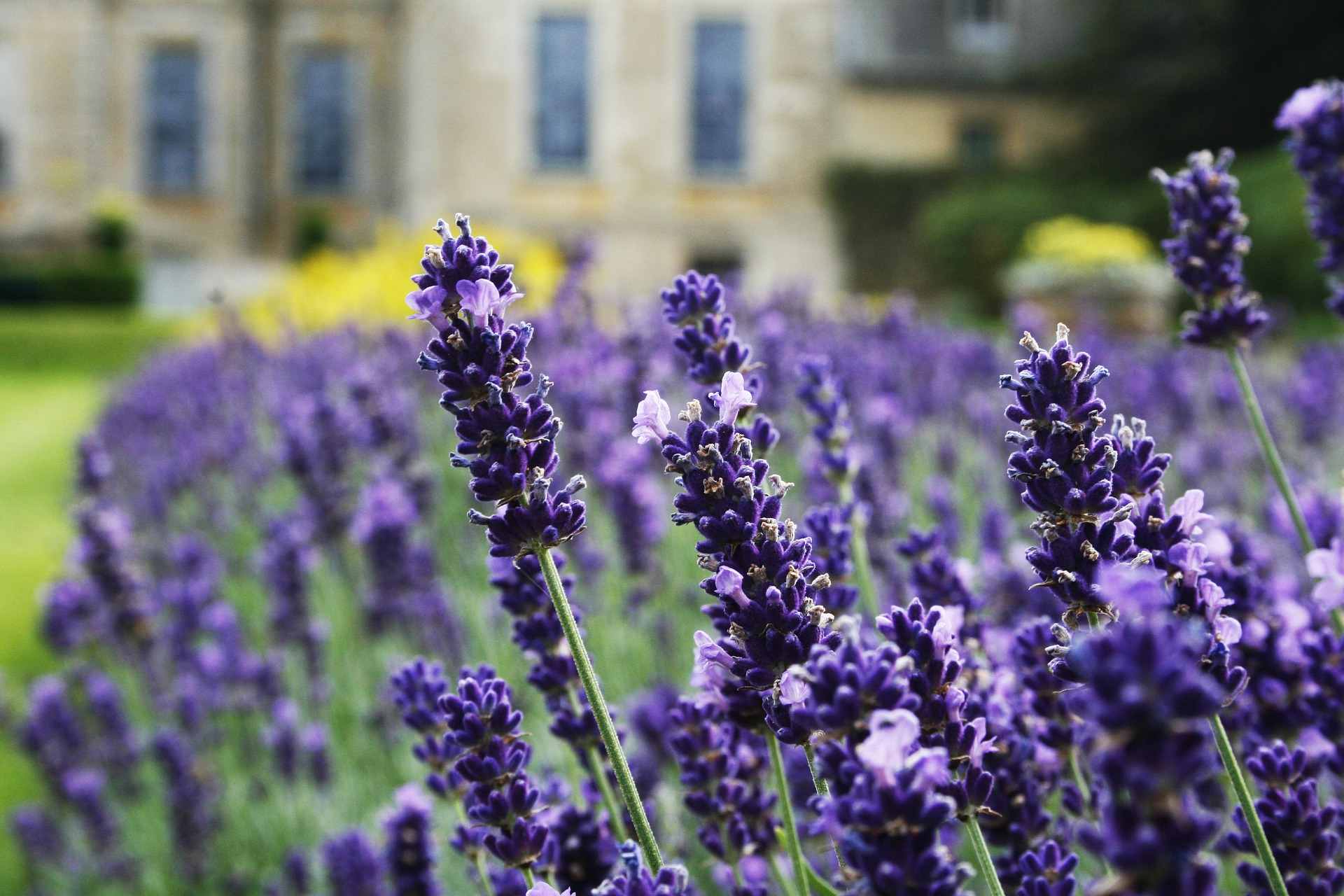
Pairing Lavenders
5 pairing ideas
Contents
Lavenders are the iconic plants of Provence and southern France. In the garden, they bring the sunshine and the scent of holidays. Valued for the flowering of their spikes ranging from white to deep purple and their sweet fragrance, they are sometimes criticized for their somewhat rigid appearance in the garden. However, there are many ways to showcase them by choosing suitable companion plants, provided the soil is well-drained.
Discover our 5 pairing ideas to accompany or extend the interest of lavender, which is highly sought after by pollinating insects during summer.
In a sunny rockery
All varieties of lavender have their place in a Mediterranean-style rockery. However, the dark purple flowers of butterfly lavender Lavandula stoechas, with its original flowers topped by delicate bracts that give it its lovely name, will thrive in this natural environment. Less hardy than true lavenders or medicinal lavenders, choose to pair them with plants that have the same requirements and play with the grey-green foliage of the different varieties of lavender. The palette is broad, including sages, cistus, rosemaries and thymes. For a successful checkerboard effect, lavenders and santolines make a winning duo that has proven itself.
Pair lavenders with everlasting flowers: Helichrysum italicum, an aromatic plant with a strange curry scent. It is covered in golden yellow flowers from June to September, or Helichrysum petiolare, identifiable by its round, grey, woolly leaves that will produce beautiful bright yellow blooms from September until the first frosts. Thus, your Mediterranean rockery will have taken on accents of a medicinal garden.
For a more exotic and graphic touch, plant at the base of your lavenders succulent plants such as houseleeks Sempervivum or small sedums.
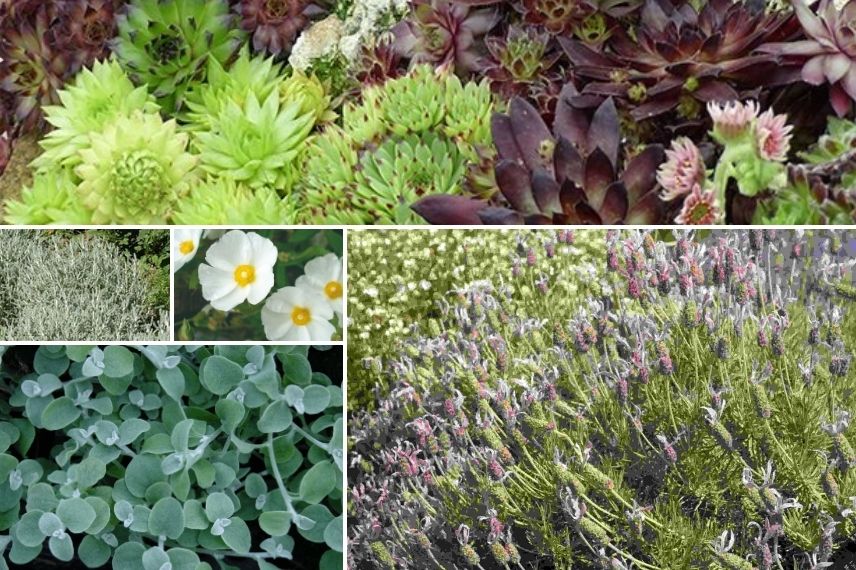
Houseleeks in mix, Santoline and cistus, Helichrysum petiolare, Lavandula stoechas
Read also
Lavender: planting, growing, pruningWith bulbs
By pairing lavenders with bulbs such as ornamental garlic or Allium, you create charming displays punctuated by perfect spheres. Coloured in purple with Allium giganteum, Allium aflatunense ‘Purple sensation’, and Allium ‘Miami’, blue from Allium caeruleum, and pink from Allium ‘Millenium’ and Allium ‘Pinball Wizard’.
Opt for an evergreen groundcover carpet of Sedum reflexum ‘Angelina’, transitioning from chartreuse green in spring to bronze tinged with orange in autumn, with golden yellow in summer. For a border with a soft habit at the foot of Lavandula angustifolia ‘Munstead’, consider Allium unifolium and the stunning Allium moly, or golden garlic, which produces umbels of bright yellow flowers at the end of spring.
For a more natural garden, pair lavenders with the deep Tyrian pink flowering of Byzantine gladiolus Gladiolus byzanthus ‘Whistling Jack’. They create large green patches just like Triteleia, whose rich star-shaped flowers range from blue to violet. Add to this the generous and beautifully decorative golden oregano Origanum vulgare ‘Aureum’, which will brighten this pastoral scene with its foliage varying from pale yellow to golden yellow throughout the season.
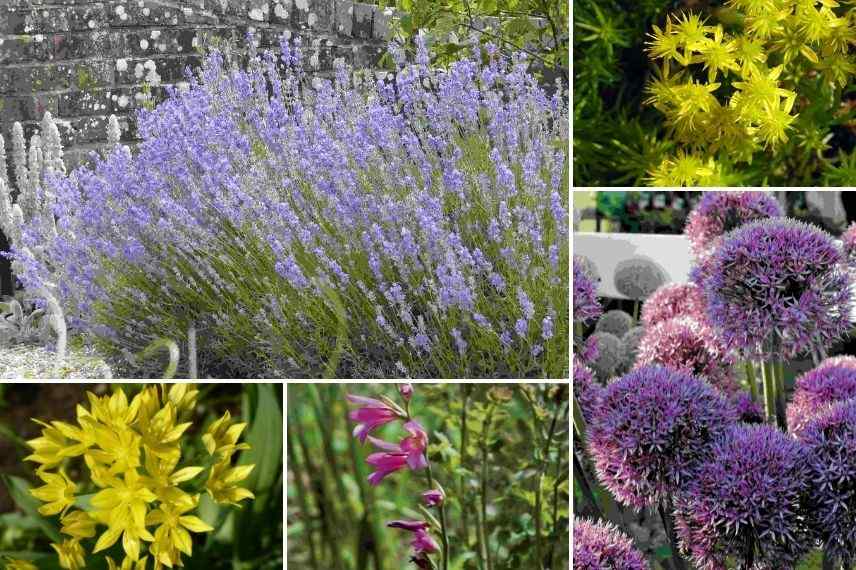
Lavandula ‘Munstead’, on the right: Sedum reflexum ‘Angelina’, Allium ‘Pinball’, on the left bottom: Allium molly and Gladiolus byzanthinus
Discover other Lavendula - Lavender
View all →Available in 2 sizes
Available in 4 sizes
Available in 2 sizes
Available in 0 sizes
Available in 0 sizes
Available in 3 sizes
Available in 3 sizes
Available in 1 sizes
Available in 6 sizes
Available in 4 sizes
In English-style mixed borders
The English mixed border provides an opportunity to utilise the great diversity offered by lavenders in terms of texture and colour. Highly decorative due to their flowering and greyish foliage, they can be described as a “Cottage plant garden” in the style of the famous English landscape designer Gertrude Jekyll.
You can blend in a carpet of bronze fennel Foeniculum officinale ‘Purpureum’ with crimson campions Lychnis coronaria ‘Atrosanguinea’, for their silver-grey foliage and the crimson red of their flowers with picturesque pink flowering. Add butterfly lavender Lavandula stoechas ‘Magical Posy Pink’. To add volume and lightness to the lavender balls of Lavandula x intermedia ‘Platinium Blonde’, you will choose the finely cut foliage of the wormwood Artemisia arborescens ‘Powis Castle’.
Consider the very beautiful exuberant cascading flowering of the lavatera Lavatera ‘Barnsley Baby’, which bears very pretty pale pink flowers turning to light pink with a carmine red heart. Forget the English tradition that would have Alchemilla mollis nestled between the lavenders for its foliage spilling carelessly over the path or lawn. Opt for a more colourful carpet in soft shades of Heuchera villosa ‘Caramel’. If your mixed border backs onto a wall, consider letting the old rose ‘Ghislaine de Féligonde’ with semi-repeat flowering in peach-apricot colour climb, along with a clematis jackmanii ‘Purpurea’ for a “so British” touch.

Lavandula x intermedia ‘Platinium Blonde’, Lavatera ‘Barnsley Baby’, Bronze fennel and Heuchera ‘Caramel’
Read also
Lavender: which one to choose?Lavenders and roses: a classic pairing
Sun and light plants: lavenders pair wonderfully with roses, which will blend their soft, airy flowerings against the upright spikes of lavender. Draw from the categories of hardy groundcover roses with trailing foliage, such as the variety ‘The Fairy’, whose flexible, spreading bushy habit contrasts with the regular forms of English lavenders. Just as hardy, the rose ‘Pink Grootendorst’ bears small, vibrant double roses made of fringed petals that resemble carnations. Both thrive in poor soils, just like lavenders.
Another advantage: the roses will benefit from the repellent effect of lavender essential oils that deter aphids. For a more surprising touch, dare to try the botanical rose Rosa rubrifolia or glauca with its particularly interesting blue foliage alongside the beautiful fresh green foliage of lavender Lavandula angustifolia ‘Middachten’.

From left to right: Rose ‘Pink Grootendorst’, Rose ‘The Fairy’, Rosa Glauca, and Lavender ‘Middachten’
In a lavender blue setting
From ultramarine to indigo, the colour blue in the garden brings calm and elegance. It also has the advantage of enlarging the space, which is beneficial for small gardens. The richness of the blue shades of lavenders plays on the extent of this entire palette. Pair lavenders with low groundcovers such as muscari or spring scillas.
In a Mediterranean climate, opt for the giant Peruvian scillas Scilla peruviana with their large royal blue inflorescence or Tulbaghia violacea. No blue decor is complete without campanulas. Hardy and very floriferous, especially Campanula lactiflora ‘Blue Pouffe’, whose lavender-blue flowers appear in waves throughout the beautiful season. The ciliate Cerastostigma plumbaginoides remains a reliable groundcover plant with its myriad of gentian-blue flowers on a glowing evergreen foliage as winter approaches. For blue-flowering hardy geraniums, choose the indispensable geranium ‘Rozanne’, whose multitude of soft blue flowers with white centres harmonises beautifully with the equally abundant and aromatic flowers of lavender Lavandula x intermedia ‘Phenomenal Niko’.
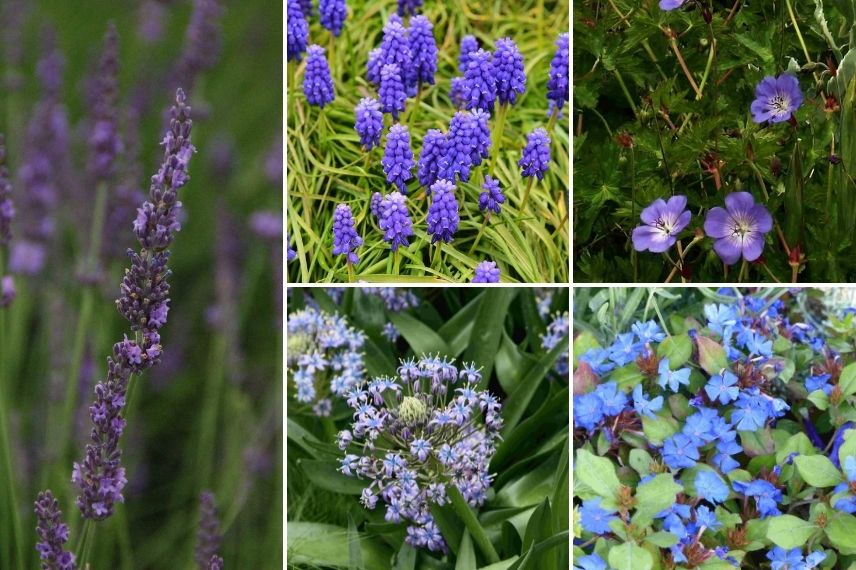
Lavandula x intermedia ‘Phenomenal Niko’, Muscari, Geranium ‘Rozanne’, Peruvian Scilla and Cerastostigma plumbaginoides
⇒ Note: lavenders thrive in full sun in well-drained soil. If this is not the case at planting, you can always install them on a slope or mound to avoid winter moisture.
- Subscribe!
- Contents
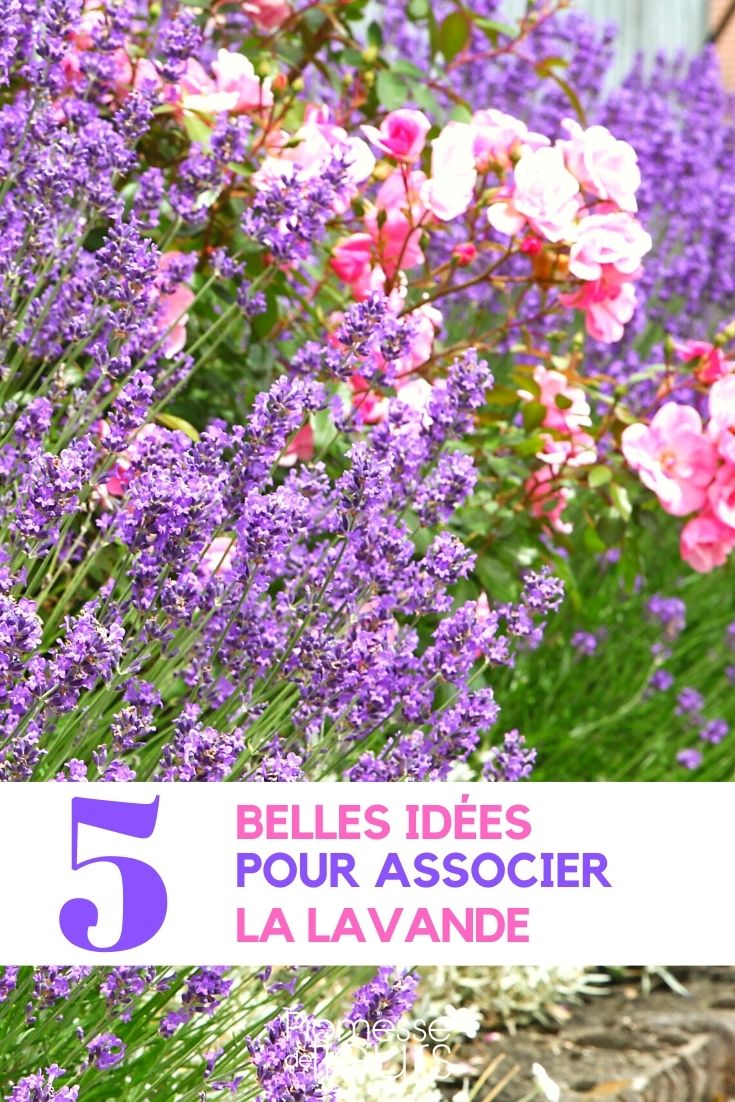































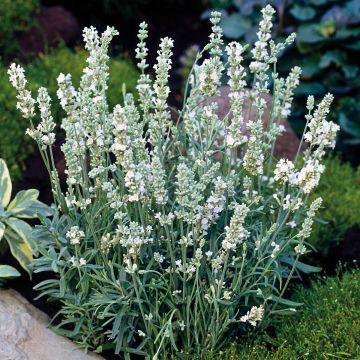




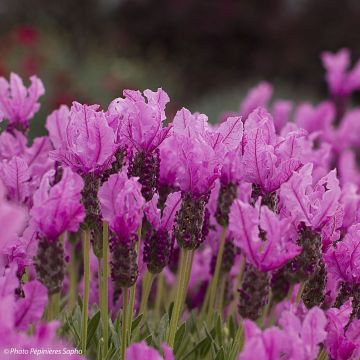
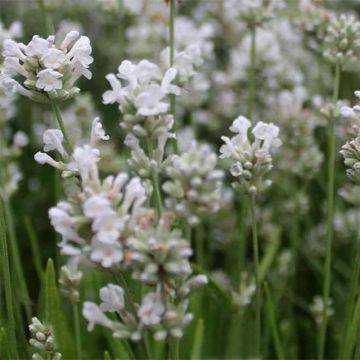

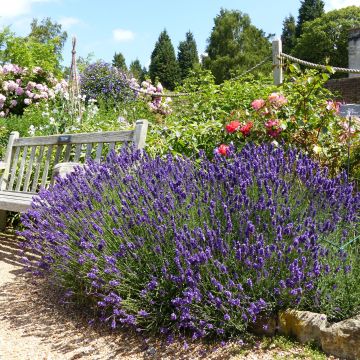
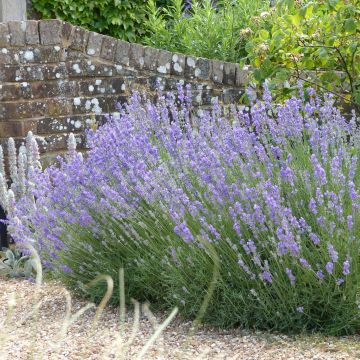
Comments